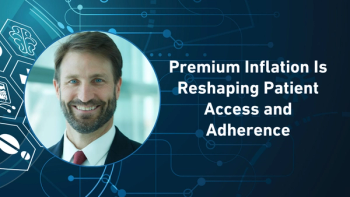
- Pharmaceutical Commerce - May/June 2017
The sales rep study I’d like to see
We’re not sure what to make of
a just-released
JAMA
study* by two professors of, respectively, business management, and economics and psychology, after a highly detailed study of the prescribing practices at academic medical centers. The goal was to compare prescribing practices before and after access restrictions against sales reps were put in place, or with academic centers lacking such restrictions. The conclusion: “Policy enactment was associated with a 1.67 percentage point decrease in the market share of detailed drugs and a 0.84 percentage point increase in the market share of non-detailed drugs.” This conclusion, according to the professors, is “remarkably robust; after the introduction of policies, about 5 to 10 percent of physician prescribing switched from expensive, detailed drugs to cheaper generics.”
The study, based on scrip-fulfillment data from CVS Health, was remarkably thorough: data on more than 16 million prescriptions written between January 2006 and June 2012 by 2,126 attending physicians at 19 academic medical centers in five states; a control group of 24,593 matched physicians not at these centers; eight drug classes; and all the numbers chewed through a “difference-in-differences multivariable regression analysis.” The National Institute of Mental Health funding supported some of the work.
A very significant proviso somewhat hidden in the thicket of information: according to a press-release statement by Professor Ian Larkin at the UCLA Anderson School of Management, one of the study authors, “No medical center completely barred salesperson visits; salespeople could and did continue to visit physicians at all medical centers in the study. The most common restriction put in place was a ban on meals and other small gifts.” In the paper, the authors also note that the conclusions are not “definitive” as to a causal relationship.
I’m not going to assume a knowledge of statistics anywhere comparable with the study authors, but after all this, my reaction is “So what?” And further, “Is this all that the pharma industry is getting from its funding of field sales forces?” Overall, there seems to be a problem between the reality of the data conclusions (which I don’t doubt) and the reality of pharma sales and marketing in the US and elsewhere—where thousands of pharma marketing managers consume millions of hours analyzing sales reports and prescribing patterns, looking for the “lift” provided by competent sales practices.
Sales reps and, to a comparable, if not higher degree, TV advertising by the industry in the US, are two of the more open and obvious efforts by the pharma industry to convince patients and their physicians of the value of their products. The practices are routinely harshly criticized by industry observers. Another bugaboo that all too many observers, inside and outside pharma distribution, pound on is brand-to-generic switching: That ship has sailed. Generics now take up nearly 90% of pharma prescribing, and the pharmacy benefit managers that control widely used drug formularies are highly efficient at pushing patients onto generics. There is (or ought to be, absent formulary restrictions) a natural limit, less than 100%, for brand-to-generic switching simply because not all patients react the identical way to all generics (or brands, for that matter).
And while the media generally has commentary routinely calling for a ban on TV advertising, the expenditure by the industry, around $6 billion annually (and rising, I’ll grant you) is a tiny part of the $300 billion+ spent on drugs. Take it away and national spending will hardly see a dip.
The studies I’d like to see, but haven’t, would look at two other realities of medical practice in the US: how quickly the medical profession switches from a traditional practice to a known better one (which would include drugs that work over ones that don’t); and the knowledge level of prescribing physicians in understanding new science (including new drugs), with and without sales rep intervention. Older statistics I recall indicate that it can take years for a medical practice known to be less effective to be replaced by one known to be effective; and there’s also the reality that prescribing practices vary by geography across the nation (this has been attributed to the influence of the dominant medical schools in different regions of the country). If the medical science is sound, why the variation?
There are many aspects of the business practices of the pharma industry and healthcare system that it is vitally important to study; the supposed baneful influence of sales reps is way down on my list.
* Larkin I, Ang D, Steinhart J, Chao M, Patterson M, Sah S, Wu T, Schoenbaum M, Hutchins D, Brennan T, Loewenstein G. Association Between Academic Medical Center Pharmaceutical Detailing Policies and Physician Prescribing. JAMA. 2017;317(17):1785-1795.
Articles in this issue
over 8 years ago
Survey tracks evolving health economics function in pharmaover 8 years ago
Is your corporate board equipped to monitor incentive programs?over 8 years ago
2017 Product Security Reportover 8 years ago
Compliance Package of the Year goes to Merck’s Zepatierover 8 years ago
How cloud-based IT systems address FDA validation requirementsover 8 years ago
Future look: The Impact of Biosimilars on Oncologyover 8 years ago
New science energizes the cancer marketover 8 years ago
A Conversation with John Chiminski, Catalentover 8 years ago
Defining the digital opinion leaders (DOLs) in healthcareNewsletter
Stay ahead in the life sciences industry with Pharmaceutical Commerce, the latest news, trends, and strategies in drug distribution, commercialization, and market access.




